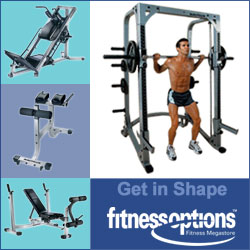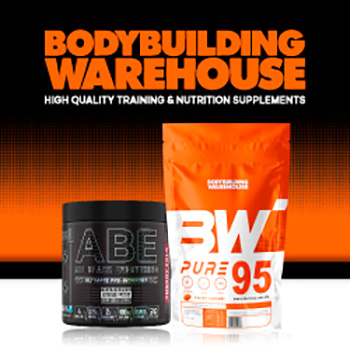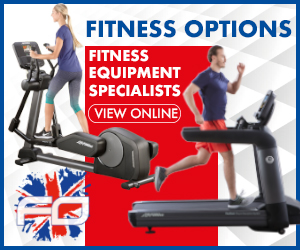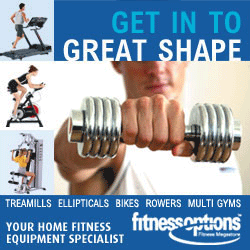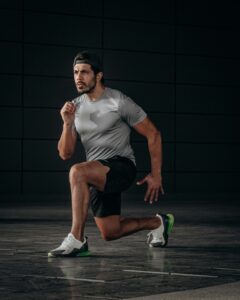
Main Points: Understanding the best performance nutrition for athletes is crucial for any sports professional aiming to enhance their skills and stamina.
- Consistency in a structured workout plan is more crucial than intensity for achieving lasting fitness results
- An effective fitness routine should combine strength training, cardio, and mobility work for optimal physical development
- Beginners should start with 3-4 weekly workouts focusing on full body exercises before progressing to more specialized routines
- Progressive overload gradually increasing workout difficulty is essential for continuous improvement in any fitness program
- Rest and recovery are just as important as training sessions for muscle growth and preventing injury
Finding the right workout routine can feel like searching for a needle in a haystack. With countless fitness programs promising miraculous results, how do you know which ones actually deliver? The truth is, the best fitness workout isn’t necessarily the trendiest or most intense it’s the one you’ll stick with consistently while progressively challenging your body.
To devise a successful fitness plan, you need to know both the science behind exercise and your own objectives. Whether you want to build muscle, lose weight, increase endurance, or just improve your overall health, the basics are surprisingly the same. A balanced approach that includes strength training, cardio, and mobility work will give you the most well rounded results for long term fitness success.
Here at JXT Fitness, we’ve sifted through thousands of workout plans. We’ve helped numerous customers change their bodies with proven training methods. The best fitness journeys always start with a solid plan that fits your lifestyle. It should also match your preferences and specific goals. Let’s explore what makes a workout plan truly effective. We will also learn how to create one that suits you.
Change Your Shape: Effective Exercise Routines
There’s no shortage of exercise programs that promise quick results. However, the ones that truly deliver are based on proven scientific principles and consistency. The best workouts aren’t about punishing your body. They focus on gradually pushing your limits with smart planning. Effective routines include compound exercises, which work more than one muscle group. They have the right intensity for your fitness level and smart progressions to prevent plateaus.
Studies have consistently proven that sticking to a program is the most important factor in achieving fitness goals. Harvard Health conducted a study. It showed regular moderate exercise is more beneficial for long term health than occasional intense workouts. This means that the “best” workout is one you can keep up for months and years, not just days or weeks.
Change occurs when you mix hard workouts with adequate rest. Your muscles don’t get stronger during exercise. Rather, they get stronger during rest periods when your body fixes the small damage from working out. A good fitness program includes planned rest phases and includes de-load weeks to avoid overworking. This helps maintain progress over time.
The Ideal Exercise Regimens for All Fitness Levels
Exercise isn’t a one size fits all solution. The best workout plan for you should match your current fitness level while still pushing you to improve. A regimen that’s perfect for a seasoned athlete might be ineffective or even harmful for a beginner. Therefore, it’s essential to know your fitness level. This way, you can choose exercises that will help you improve without risking injury or exhaustion.
Identify Your Current Fitness Level
Novice: Little to no regular exercise experience in the past 6 months
Intermediate: Regular exercise for 6+ months with basic movement proficiency
Expert: 1+ years of regular training with good technique and conditioning
The best workout routines are those that change as you do. As your body gets used to a certain workout, it will become easier. This is why the concept of progressive overload is important in fitness. This principle states that you should gradually increase the intensity of your workouts. You can add more weight, reps, or sets, or decrease the rest time between sets. This ensures your body stays challenged and helps you keep seeing results.
4-Week Foundation Builder: Beginner Workout Plan
Starting out in fitness, it’s best to keep things simple. As a beginner, your focus should be on learning basic movement patterns. It’s better to avoid getting caught up in complex routines. At this stage, you’re looking to develop coordination and build basic strength. Establishing regular exercise habits will form the foundation for all your future training.
Begin by doing full body workouts 2-3 times a week. Make sure to rest for at least one day between each workout. This schedule gives you enough exercise to improve, while also giving your body enough time to recover. Concentrate on compound exercises, which work multiple muscles at the same time. Exercises like squats, push-ups, rows, lunges, and planks are great for building functional strength in a time efficient way.
If you’re just starting out, it’s crucial to focus on doing exercises correctly. Don’t push yourself too hard. Start with exercises that use your own body weight or very light weights. Gradually make them more difficult as you get more comfortable with the movements. This approach helps you avoid injuries and builds up the skills needed for more advanced exercises later on. Remember, the most important thing at this stage is to make a habit of regular exercise, not to push yourself to the limit.
Intermediate Training: 6-Week Strength and Endurance Booster
Once you’ve mastered basic fitness habits and movements, it’s time to increase the intensity. Intermediate routines usually involve 3-4 workouts a week. They often use training splits that target different muscle groups on different days. This method allows for a higher training volume while still giving each muscle group enough time to recover.
Intermediate level workouts must systematically incorporate progressive overload. This involves planned increases in resistance, sets, or decreased rest periods. Your workouts may now include a wider range of reps. Use heavy sets of 5-8 reps for strength, moderate sets of 8-12 for muscle building, and higher rep sets of 12-20 for endurance. This diversity helps create a well rounded fitness adaptation and prevents training plateaus.
Now, think about adding more advanced training methods such as supersets (doing two exercises one after the other), interval training, or periodization programming that rotates through different training goals. Keep a close eye on your workouts to make sure you’re continually pushing yourself and seeing measurable gains in strength, endurance, or body composition.
Advanced Fitness: 8-Week Full Body Makeover
Those who are already advanced in their fitness journey need a more complex program to keep improving. A full body makeover that spans 8 weeks usually uses periodization. This involves alternating between various training stages to avoid stagnation and enhance outcomes. There could be stages for strength, blocks for hypertrophy, and periods for metabolic conditioning. Each one builds on the progress made in the previous stage.
For those more advanced, you’ll likely work out 5-6 times a week, sometimes even twice a day. These are known as “two-a-days”. These workouts are very specialized, focusing on certain areas like maximum strength. Techniques also focus on power development or muscular endurance. As you advance, recovery management becomes crucial. Techniques like contrast therapy, massage, and targeted mobility work become essential parts of your program.
Advanced training includes unique methods like drop sets and rest. It also involves pause training and complex training techniques that merge strength and power exercises. Your diet and recovery routines must be equally advanced. Ensure you have exact calorie and macronutrient goals that meet your training requirements. This fitness level demands a lot of dedication, but if you stick with it, you’ll see incredible physical changes.

